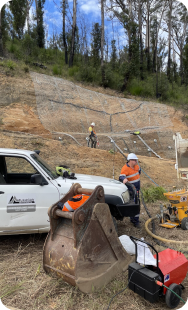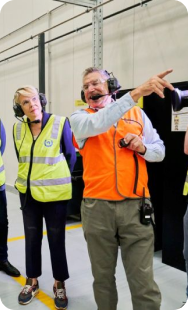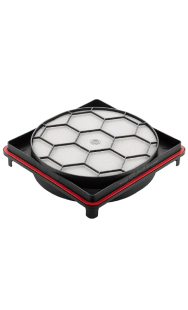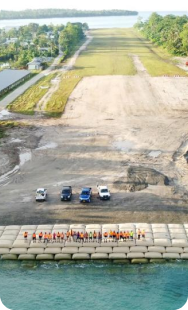Since the mid-1950s, the Australian economy has moved from focusing on manufacturing and agriculture to services, says the Productivity Commission. Nine out of 10 of us now work in services and that sector accounts for about 80% of production.
Is your SME considering becoming a manufacturing innovator? The field is shrinking, but that may be a good thing for the standouts.
This article will help you navigate the road ahead and guide you on some highlights and inspiration.
Australia’s spending on innovation is declining
The latest Australian Bureau of Statistics figures show business spending on research and development (R&D) increased to $20,642M in 2021-22, a 14% jump from two years prior. A quarter of that R&D happened in manufacturing.
However, this increase is not reflected in the proportion of overall R&D spending as a share of the Gross Domestic Product (GDP). This continues to stay at just under 1% since 2017-18.
Universities Australia talks about a freefall in R&D investment.
The Federal Government’s pledge to boost R&D to 3% of GDP
At present, the government’s budget for R&D and tax incentive support for businesses is low and we rank 30th out of 42 countries in the OECD.
In August last year, the Federal Industry Minister, Ed Husic, announced Australia should aim for 3% R&D spend as a proportion of GDP. Then, last November, peak body Science & Technology Australia clarified this, calling for 2.4% by 2030 and 3% of GDP by 2035.
One way for our country to boost spending is to widen what qualifies for R&D tax credits. AIGroup suggests we look to the UK where businesses only have to show they overcame scientific or technology uncertainty rather than having a formal experimental process.
However, tax credits are unlikely to incentivise R&D investment if businesses continue to struggle with the skills shortage.
High-impact R&D as crucial to Australian manufacturing
In October 2022, the Federal Government announced a $15B pledge to set up a National Reconstruction Fund to support advanced manufacturing capability. The fund offers equity investment, guarantees, and an online portal to entice investors.
The fund’s priority areas are:
• renewables and low emissions technologies
• medical science
• transport
• value-add in the agriculture, forestry, and fisheries sectors
• value-add in resources
• defence capability
• enabling capabilities.
In November, Minister Husic announced the fund was open for business And Ivan Power, the fund’s inaugural CEO, told the Australian Financial Review last month that his remit is to work with companies, including SMEs, to help take their businesses to a global scale. He adds his aim is to diversify and transform Australian industry to harness Australia’s competitive advantages.
What high-impact R&D looks like
High-impact R&D approaches include those which adapt business models, harness innovative technologies, reduce waste, are environmentally sustainable, boost working conditions, say experts.
There are two schools of thought (not mutually exclusive) that can help drive high-impact R&D: open innovation (OI) and technologies from the fourth industrial revolution, Industry 4.0 (I40).
OI sees manufacturing business models embrace:
• Collaboration with other stakeholders
• Crowdsourcing
• Incorporating valuable ideas from inside or outside of a company or a market, such as new combinations of industries
• Human resource practices that build trust, long-term employment relationships and employment security. These will help to build an innovation climate.
There’s a balance between openness and intellectual property/competitiveness. A study has found that small manufacturing plants with a breadth of openness in innovation performance did much better than larger firms.
Meanwhile, I40 technologies incorporate the Internet of Things, computer simulation, additive manufacturing, collaborative robots, artificial intelligence, virtual/augmented reality, big data analytics, cybersecurity, cloud computing, and radio frequency identification (RFID). The latter helps with remote identification, offering businesses more control over their products.
The I40 movement is already benefiting manufacturing. Firms that adopt I40 technologies typically have strong vertical and horizontal integration of their operations. This reorganisation and investment in new tech can increase profit, minimise costs and reposition a business as a market leader.
Leading manufacturing innovators
AIGroup says a small number of R&D champion industries have done the most for business performance in the past decade:
Professional, scientific and technical
(from 3.12% to 4.16%)
Manufacturing
(4.1% to 4.3%), thanks to the mining boom
Financial and insurance
(0.32% to 0.23%)
Among the manufacturers, here are the most innovative, according to the Australian Financial Review BOSS, including:

which uses recycled materials to make an acid-resistant concrete that can survive harsh environments, such as sewers

Australia’s largest manufacturer of rigid plastic products, for its pandemic shift into making hand sanitiser

Berger Ingredients and Coco & Lucas’ Kitchen
for their ready-made plant-based meals, including by and for children

which makes a kit that lets non-mechanics install a diesel fuel pre-filter and crankcase to a vehicle

which created a geotextile (partly made from plastic bottles) for large infrastructure projects.
Australia’s latest batch of the top 50 most innovative manufacturers will be announced on April 18. Check the @AUManuacturing website for updates. Here’s the list of the 2023 winners.
And, if you’re looking for ways to innovate, we’re your partner in risk mitigation. Let us help you navigate this area.
Useful links:
Advanced Manufacturing Growth Centre Ltd
https://www.amgc.org.au/
Sovereign, smart, sustainable: Driving advanced manufacturing in Australia | Australian Parliament
https://parlinfo.aph.gov.au/parlInfo/download/committees/reportrep/RB000196/toc_pdf/Sovereign,smart,sustainable.pdf

